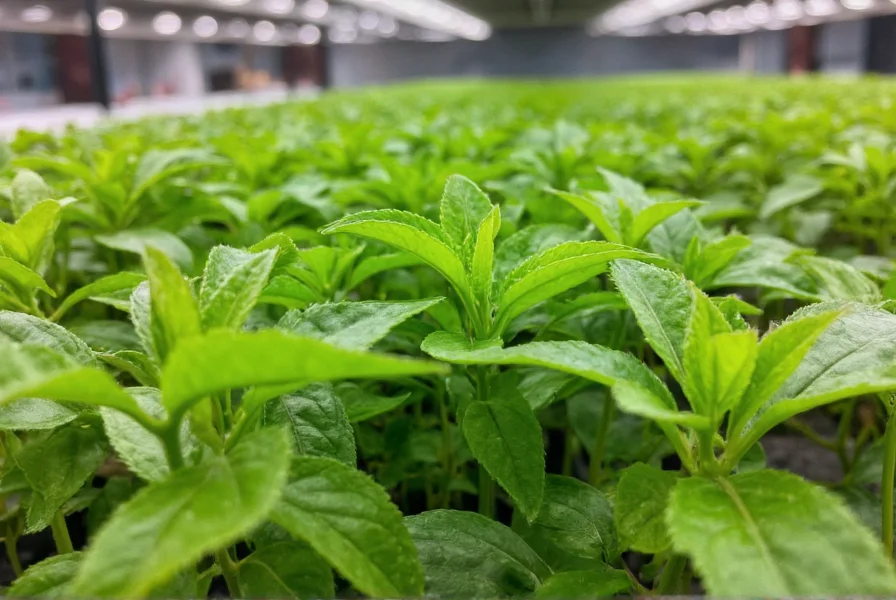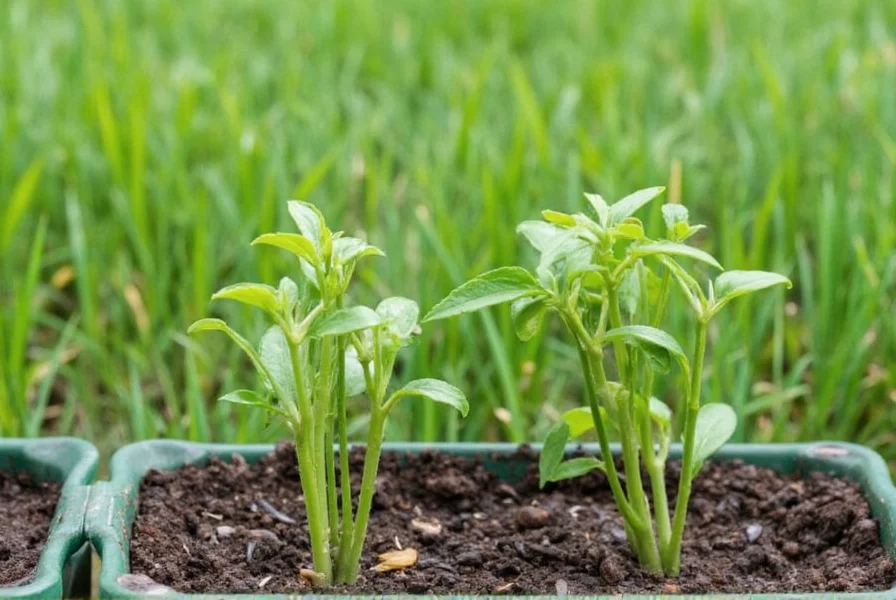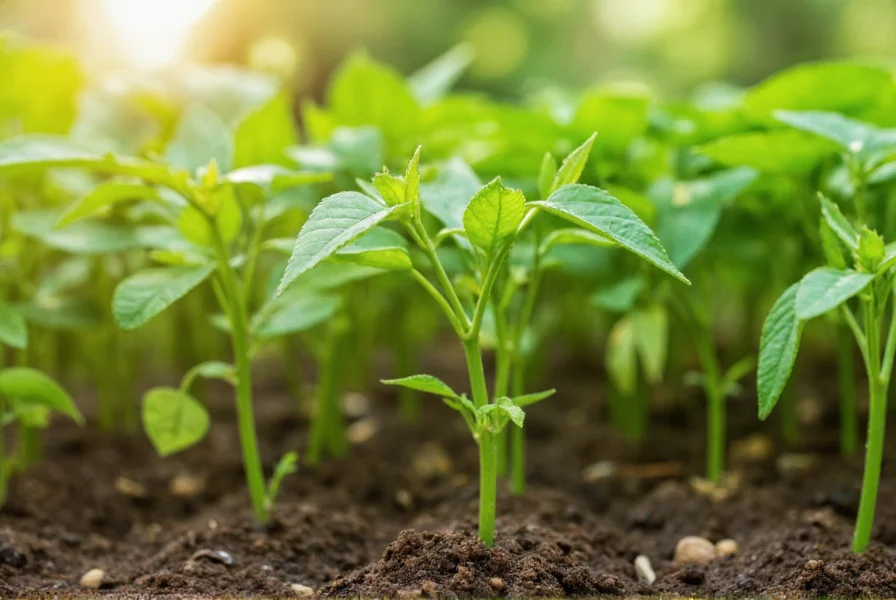Healthy pepper seedlings form the foundation for robust plants that produce abundant harvests. Whether you're growing bell peppers, jalapeños, or specialty varieties, understanding their specific needs during this vulnerable stage significantly impacts your gardening success. This comprehensive guide covers science-backed practices for nurturing vigorous pepper seedlings from germination through transplanting.
Optimal Growing Conditions for Pepper Seedlings
Pepper seedlings require precise environmental conditions to develop strong root systems and healthy foliage. Unlike many other vegetables, peppers are particularly sensitive to temperature fluctuations during their early growth stages.
Temperature Requirements
Maintain consistent soil temperatures between 70-85°F (21-29°C) for optimal pepper seedling development. Temperatures below 60°F (15°C) cause stunted growth and increase susceptibility to disease. Use a seedling heat mat under trays to maintain proper soil warmth, especially during early spring planting. Air temperatures should remain between 75-85°F (24-29°C) during the day and no lower than 65°F (18°C) at night.
| Growth Stage | Soil Temperature | Air Temperature (Day) | Air Temperature (Night) |
|---|---|---|---|
| Germination | 80-90°F (27-32°C) | 85-90°F (29-32°C) | 75-80°F (24-27°C) |
| Early Growth (1-2 weeks) | 75-85°F (24-29°C) | 80-85°F (27-29°C) | 70-75°F (21-24°C) |
| Late Seedling Stage (3-6 weeks) | 70-80°F (21-27°C) | 75-80°F (24-27°C) | 65-70°F (18-21°C) |
Light Requirements for Healthy Development
Proper lighting is critical when learning how to care for pepper seedlings. They need 14-16 hours of direct light daily. Inadequate light causes leggy, weak growth that struggles after transplanting. South-facing windows often provide insufficient light, especially in northern latitudes.
For best results, use artificial lighting:
- LED grow lights positioned 2-4 inches above seedlings
- Fluorescent T5 fixtures suspended 6 inches above plants
- 14-16 hour daily light cycle with timer automation
Rotate trays regularly to prevent directional leaning. When growing pepper seedlings outdoors after hardening off, provide partial shade during the hottest part of the day for the first week.

Watering and Soil Management
The right moisture balance prevents common problems with pepper seedlings like damping-off disease or nutrient deficiencies. Use these watering techniques:
- Water from below by placing trays in shallow water for 15-20 minutes
- Mist foliage lightly in morning to maintain humidity
- Allow top 1/4 inch of soil to dry between waterings
- Use room-temperature water to avoid shocking roots
For the best soil for pepper seedlings, choose a well-draining mix with:
- 50-70% high-quality seed starting mix
- 30-50% perlite or vermiculite for aeration
- pH between 6.0-6.8
Transplanting Timeline and Hardening Off Process
Understanding when to transplant pepper seedlings is crucial for garden success. Wait until outdoor nighttime temperatures consistently stay above 55°F (13°C) and all danger of frost has passed. Most pepper varieties require 8-12 weeks from seed to transplant-ready size.
The hardening-off process prepares indoor-grown seedlings for outdoor conditions:
- Start 7-10 days before final transplant date
- Begin with 1-2 hours of morning shade on day 1
- Gradually increase exposure by 1-2 hours daily
- Expose to gentle wind using a fan indoors before moving outside
- Monitor for wilting and adjust exposure accordingly
- Complete the process when seedlings tolerate full-day exposure
Transplant pepper seedlings when they reach 6-8 inches tall with 5-7 true leaves. Avoid waiting until plants become root-bound in their containers, as this creates transplant shock.
Common Pepper Seedling Problems and Solutions
Even experienced gardeners encounter challenges with growing healthy pepper plants from seedlings. Recognize these common issues and their remedies:
Leggy Seedlings
Symptoms: Tall, thin stems with sparse leaves
Cause: Insufficient light or overcrowding
Solution: Increase light intensity/duration, thin crowded seedlings, or plant deeper during transplanting (peppers can develop roots along buried stems)
Yellowing Leaves
Symptoms: Lower leaves turn yellow while upper growth remains green
Cause: Nitrogen deficiency or overwatering
Solution: Apply balanced organic fertilizer at half-strength, improve drainage, and adjust watering frequency
Damping-Off Disease
Symptoms: Seedlings collapse at soil line, often with white fungal growth
Cause: Soil-borne fungi thriving in cool, wet conditions
Solution: Prevent with proper air circulation, avoid overwatering, use sterile seed starting mix, and apply cinnamon solution as natural fungicide

Advanced Techniques for Superior Pepper Seedlings
For gardeners seeking to optimize their pepper seedling care guide practices, consider these professional techniques:
Strategic Fertilization
Begin fertilizing pepper seedlings when they develop their first true leaves:
- Weeks 2-4: Balanced liquid fertilizer (10-10-10) at 1/4 strength weekly
- Weeks 5-6: Higher phosphorus formula (5-10-5) to encourage root development
- Final week before transplant: Calcium-rich supplement to prevent blossom end rot later
Root Development Enhancement
Promote stronger root systems through:
- Gentle brushing of seedlings 20-30 seconds daily to simulate wind
- Careful root pruning when transplanting to containers
- Using air-pruning containers that prevent circling roots
Companion Planting Considerations
When planning your garden layout, consider these companion planting strategies for peppers:
- Beneficial companions: Basil, onions, spinach, and marigolds
- Avoid planting near: Fennel, apricot trees, or other nightshades too closely
- Space requirements: 18-24 inches between plants depending on variety
Frequently Asked Questions
How long do pepper seedlings take to grow before transplanting?
Pepper seedlings typically require 8-12 weeks from seed to transplant readiness. They're ready when they reach 6-8 inches tall with 5-7 true leaves and outdoor temperatures consistently stay above 55°F (13°C) at night. Some larger varieties like bell peppers may need the full 12 weeks, while faster-growing hot peppers might be ready in 8-10 weeks.
Why are my pepper seedlings growing so slowly?
Slow growth in pepper seedlings usually indicates temperature issues, as peppers require warm soil (70-85°F/21-29°C) for optimal development. Other common causes include insufficient light (they need 14-16 hours daily), nutrient deficiencies, or root-bound conditions. Check your heat mat functionality and ensure your lighting setup provides adequate intensity without burning the plants.
Can I grow pepper seedlings under regular LED lights?
While regular LED lights provide some usable spectrum, dedicated grow lights yield significantly better results for pepper seedlings. Standard LEDs lack sufficient red and blue wavelengths critical for photosynthesis. If using regular LEDs, choose daylight-spectrum bulbs (5000K-6500K) and position them very close to seedlings (2-4 inches), but expect slower growth compared to purpose-built grow lights designed for plant development.
How do I prevent damping-off in pepper seedlings?
Prevent damping-off by maintaining proper air circulation with a small fan, avoiding overwatering, and using sterile seed starting mix. Water from below rather than overhead, and ensure seedlings aren't overcrowded. Applying a light cinnamon solution (1 tablespoon per cup of water) as a natural fungicide can also help prevent this common seedling disease without harmful chemicals.
Should I remove the first flowers from young pepper plants?
Yes, removing the first flowers from young pepper seedlings directs energy toward root and foliage development rather than premature fruiting. Wait until plants are established in their final location and have developed substantial leaf growth (usually 2-3 weeks after transplanting) before allowing flowers to develop. This practice results in stronger plants with higher overall yields later in the season.











 浙公网安备
33010002000092号
浙公网安备
33010002000092号 浙B2-20120091-4
浙B2-20120091-4